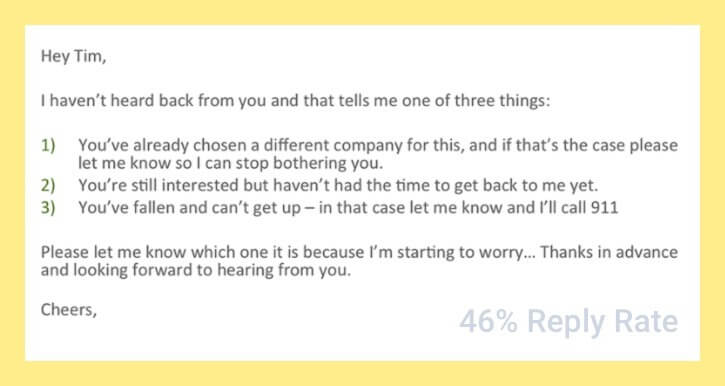Knowing the golden mean in formal writing patterns and the appropriate mood of an email is an art form called eclecticism which is the effective blending of different styles and approaches.
The science of eclecticism in emailing declares the next etiquette rules:
Appreciate the email recipient’s time
The business world is busy. There is no time even for an extra cup of coffee, not to mention a long and vague email. Be specific and concise in writing a business introduction email, take a reader right to the point from the subject line. Get rid of blurry thoughts and requests in your letter.
People don’t care about who you are, and it’s normal
Ask your ego to step aside when you are introducing yourself in a business email. People don’t care about who you are, which university you graduated from, what achievements you have reached (unless it’s related to the topic of a request). They care only about how they can benefit (most often) and how they can be helpful to you (in terms of politeness). And this is totally normal.
Be short when introducing yourself, don’t give information that has nothing to do with your request. Try to use only the facts: your name, job title, and some points about the results of your work if they are relevant and can help convince a recipient to continue reading your email.
The classics are a must in business e-communication
Do you want to make your email non-trivial? Do you want to be like no one else? Okay, but you should slow your roll here. Keep in mind that the business world has some traditions and patterns you are required to follow. Pay specific attention to creating a unique business writing strategy.
By following etiquette and a defined email structure, you simply show that you respect the interlocutor by default. And as it’s known, respect is the basis of successful collaboration. So, yes, the classics are important in writing a business email.
Humor may be very helpful
Humor is a powerful communication tool, just don’t overdo it! Let it be just a slightly visible motive in your email. It is like chocolate: the majority like it, but there is always somebody who hates it or has an allergy. So, make sure your humor will be understood by an email recipient. Otherwise, it’s better not to take a risk.

Email Structure Every Professional Should Follow
The way you structure your email matters. It not only makes it easier to read and understand but also reveals you as a professional in the interlocutor’s eyes. There are some essential parts of the business introduction email you should stick to:
Pay attention to the subject line
According to Convince & Convert, 33% of people decide whether to open an email or not based on a subject line. An effective subject line performs the below-mentioned functions:
- It tells people what to expect in the email.
You Can Also Read
You Can Also Read






